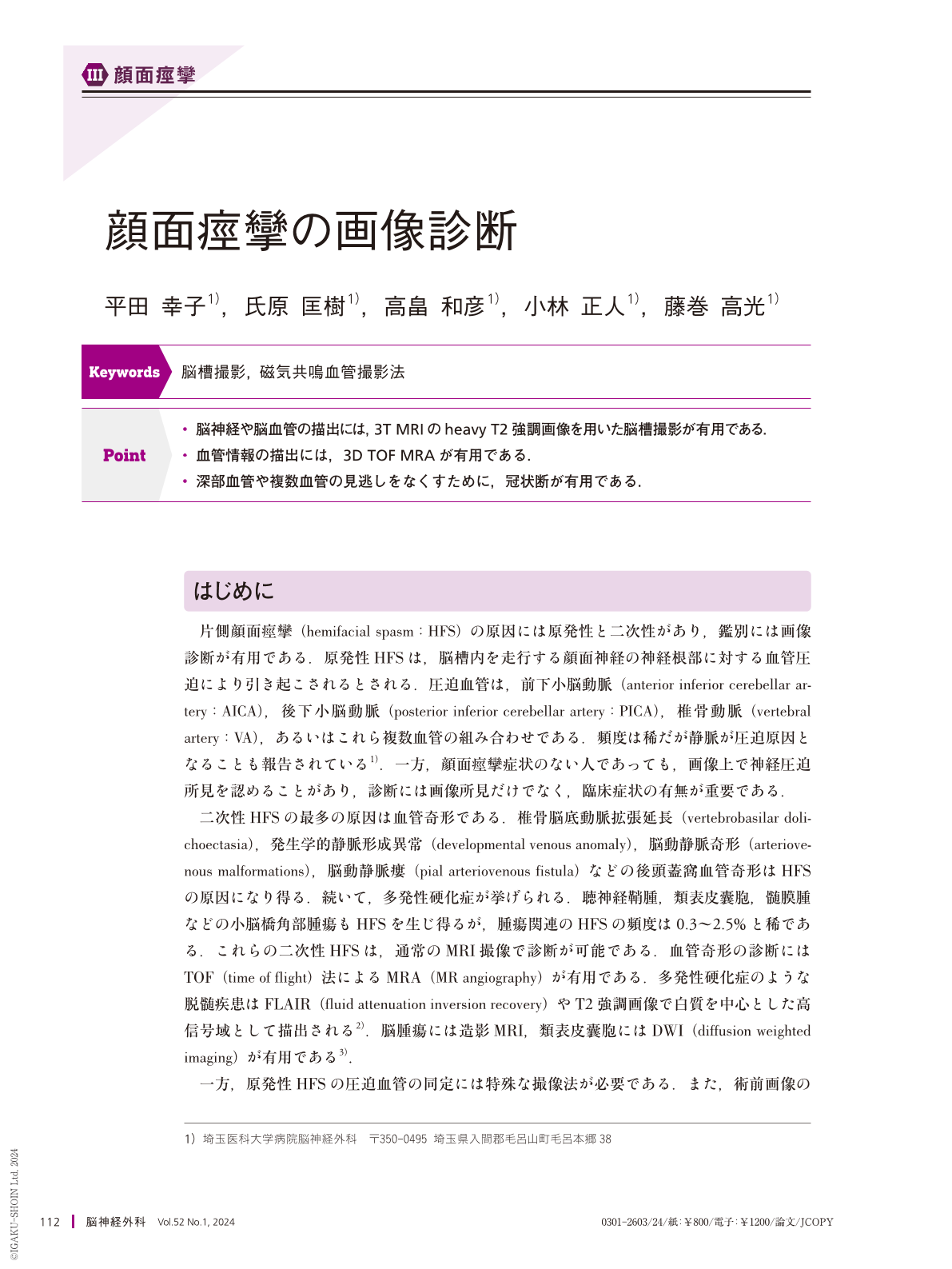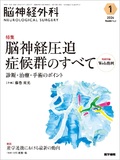Japanese
English
- 有料閲覧
- Abstract 文献概要
- 1ページ目 Look Inside
- 参考文献 Reference
Point
・脳神経や脳血管の描出には,3T MRIのheavy T2強調画像を用いた脳槽撮影が有用である.
・血管情報の描出には,3D TOF MRAが有用である.
・深部血管や複数血管の見逃しをなくすために,冠状断が有用である.
Cisternography using heavy T2-weighted images from 3-Tesla magnetic resonance imaging(MRI)and three-dimensional time-of-flight MR angiography(3D TOF MRA)is useful for identifying conflicting vessels in primary hemifacial spasm(HFS). Cisternography provides high-signal images of the cerebrospinal fluid and low-signal images of the cranial nerves and cerebral blood vessels, whereas 3D TOF MRA provides high-signal images with only vascular information. The combination of these two methods increases the identification rate of conflicting vessels. The neurovascular conflict(NVC)site in HFS is where the facial nerve exits the brainstem. However, on MRI, the true NVC site is often more proximal than the facial nerve attachment to the brainstem. On preoperative MRI, it is important to not miss the blood vessels surrounding the proximal portion of the facial nerve. If multiple compression vessels or deep vessels are located in the supraolivary fossette, they may be missed. Coronal section imaging and multiplanar reconstruction(MPR)minimize the chances of missing a compression vessel. Preoperative MRI and CT can also provide various other information, such as volume of the cerebellum, presence of emissary veins, shape of the petrosal bone, and size of the flocculus.

Copyright © 2024, Igaku-Shoin Ltd. All rights reserved.


